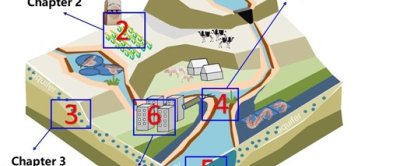
Project
The phosphorus cycle from land to sea in China
Phosphorus (P) is essential for crop growth but overuse of P fertilizer has caused significant soil P surpluses, low P use efficiency and serious water pollution in China. Until now, there has been no integrated quantitative study on P flows to land, uptake by crops, accumulation in soil, losses to surface water and export by rivers to sea in China. This study aims to explore the P flows from land to sea in China, assess the historical spatial-temporal changes, and investigate the future changes in response to changes in management.
Introduction
Phosphorus (P) is one of the most important macro nutrients for crop growth, but almost 80% of the fertilized P accumulated in the soil in China since 1980. The accumulated soil P is called “residual P” or “P legacy” and can be lost by erosion and runoff With an increased soil P status, there is an increasing risk for elevated P flows to the water system, causing threats to surface water, eutrophication, and coastal hypoxia. Sustainable P management, therefore, requires insights in the fate of P from land to sea. In a collaboration between Wageningen University & Research, Utrecht University, and China Agricultural University, this research aims to explore the P flows from land to sea in China, assess the historical spatial-temporal changes, and investigate the future changes in response to changes in management.
Objective
This study aims to explore the P flows from land to sea in China, by assessing the historical spatial-temporal changes, and investigating the future changes in response to changes in management.
Method
Insight in the P cycle from land to sea in China will be derived by (i) adapting and applying the Integrated Model to Assess the Global Environment (IMAGE)-Global Nutrient Model (GNM) with a spatially explicit dynamic version of a soil P model (the DPPS-grid model), combined with (ii) large-scale inventory data, to simulate P flows in soils, surface waters and river export. The soil P model will focus on the relationship between P inputs, the size, and change in labile and stable soil P pools and plant P uptake.
- First the spatiotemporal dynamics of soil P and crop uptake during the 20th century will be analysed at global scale with a focus on China, followed by a more specific soil P pool change analysis in China, to estimate the current Phosphate Saturation Degree (year 2010).
- Long-term changes and sources of P to Chinese inland water and coastal seas will then be analysed with the IMAGE-GNM model. Long-term and large-scale Chinese data will be used to apply the model, including fertilizer, manure, precipitation, temperature, soil nutrient data, etc and to validate the model, i.e. water quality monitoring data.
- Future water quality will be predicted under different Shared Socioeconomic Pathways (SSPs).
The various approaches will be included in 5 chapters of the thesis (see figure).

(Expected) results
Expected results include 5 publications, as described below:
- Spatiotemporal dynamics of soil phosphorus and crop uptake in global cropland between 1900-2010 (published).
- Increasing areas of soil phosphorus saturation in China’s croplands between 1900-2010 to assess the increased risk of eutrophication of surface water (under review).
- Spatial-temporal changes, sources, and driving forces of phosphorus flows to Chinese inland waters between 1970-2010.
- Long-term changes of phosphorus inputs to Chinese coastal seas between 1970- 2010.
- Future water quality between 2010-2050 under different shared socioeconomic pathways.
Publications
- ZHANG, J., BEUSEN, A. H. W., VAN APELDOORN, D. F., MOGOLLóN, J. M., YU, C., AND BOUWMAN, A. F 2017. Spatiotemporal dynamics of soil phosphorus and crop uptake in global cropland during the twentieth century. Biogeosciences, 14, 2055-2068.
